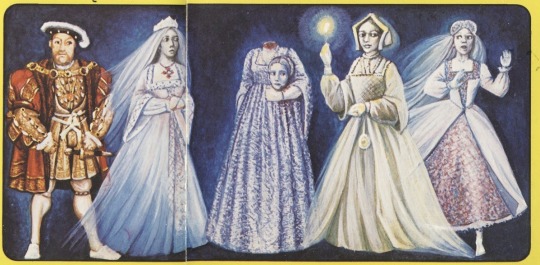#puerperal
Text
Eu tenho um filho
isso mesmo
Eu agora tenho um filho. Tem noção? Fico chocada sempre que realizo isso.
Eu nunca quis casar, mas sempre quis ter um filho. Mas eu casei. E com esse marido eu tenho esse filho.
Por anos achei que seria uma menina. Até nome tinha. Nos meus devaneios ou mente criativa qual faz parecer que é algo metafísico, essa menina já me rodeava. Mas aí descobri que seria um menino. E o choque do primeiro instante? “Como assim? E a menina onde tá?”. Mas em seguida passou, e hoje faz total sentido eu ser mãe de um menino. Sou louca nele, louquinha…
No rosto não tem nada de nenhum de nós dois, a personalidade parece ser ímpar também. As unhas dele não sei de quem puxou. E o polegar das mãos que não reconheço? Tô amando ver quem ele é.
Eu tive medo de não engravidar. Quando eu quis pela 1a vez, já não era tão nova, e não pude realizar… meu projeto teve que esperar, antes eu precisa tirar do meu corpo o que não cabia nele, que crescia por conta própria sem eu saber nem querer. Ninguém quer. Mas acontece.
E ao primeiro sinal de liberdade, eu fui lá e fiz.
Meu filho veio rápido, tão rápido que eu duvidei: “e aquilo tudo que eu pensava, que me dava medo? Que parecia destino? E a minha idade? Iiii esse nenê vai nascer com algum problema.”
Eu nunca descansei, eu não descanso. Minha mente trabalha e trabalha nas coisas mais mirabolantes. E me confunde… aff.
Meu filho nasceu de um parto potente do qual eu sinto muita saudade. Foi dilacerador sem sofrer nenhuma laceração. Na dor da alma rasgando sem nenhuma anestesia. Chorando e cansada, dei tudo de mim. Ele nasceu. Eu nasci. Nós nascemos.
Que dia…
Mas eu tive medo, sempre tenho. Eu tive ansiedade, sempre tenho.
As vezes cansa demais administrar essa gangorra que ora to assim, ora não tô.
Quero vida plena, vida leve.
Meu filho desabrochou em mim todos os botões fechados, abriu todas as caixas trancadas a prego, abriu todas as portas do corredor ao mesmo tempo, quebrou todas as garrafas, sacudiu todos os lençóis.
O puerpério é uma ponte que se atravessa deixando pra trás o que não é mais em direção ao que ainda vai ser. E como faz pra cruzar essa ponte sem querer se jogar no mar? É atravessar de olhos vendados, pés atados, parece até que ando de costas!
É melhor seguir em frente, apesar de tudo. Sempre em frente (uma delas me diz).
Vai cega, cagada, apanhando, mais vai.
Isso tem um custo, mas… isso é viver.
/ Meu filho, me emociona te ver, me emociona te ver. Me emociona.
Nunca mais serei a mesma de antes e nem quero ser. Tô rindo da minha cara de tão mãezinha que estou como nunca achei que seria. E achando que sempre fui assim, afinal eu estou toda ali. Que rombo, que tombo, que incrível. Isso nem a minha mente mais ativa, minha intuição mais vivida puderam adivinhar.
5 notes
·
View notes
Text
Mastitis
La Academia de Medicina de la lactancia (Academy of Breastfeeding Medicine) Publicó en el 2022, un protocolo actualizado de recomendaciones con orientación fisiopatológica, del llamado espectro de mastitis, puerperal. hago un resumen de dichas recomendaciones, la referencia al artículo completo está en el link del final.
La mastitis constiye una complicación frecuente de la lactancia, y es un…

View On WordPress
0 notes
Text
I Wash My Hands of This!
The story of Ignaz Semmeweis, as told through his fictitious diary after he'd already been committed to a mental institution. What should be a gripping medical thriller is actually just two hours of arguing about washing one's hands before surgery.
#bad idea#movie pitch#pitch and moan#sanitation#sanitization#hand washing#surgery#ignaz semmelweis#semmelweis#drama#medical drama#doctor#medicine#puerperal fever#obstetrics and gynecology#obstetrician
2 notes
·
View notes
Text
After being sent away from Katherine's house, this is Elizabeth's letter of June 1548 expressing her sorrow at having to leave and thanking Katherine for her kindness and friendship. Katherine would die 3 months later of childbed fever 😢👑




#becoming elizabeth#princess elizabeth#Kat ashley#katherine parr#thomas seymour#henry viii#puerperal fever#scandal#BE#👑
30 notes
·
View notes
Text
Wife gets her tight ass pounded
Huge Ass Ebony Victoria Cakes Tries Anal With Big White Dick
Mom White ass
treasury casino brisbane restaurant
Teen licking stepmoms ass
Camgirl CandyGaby shows off her candy ass in high heel stockings
Getting amazing blowjob bybgirlfriend in nature
Anupriya
Victoria Voxxx hot sluty girl need cock in her wet mouth
Oh my God Evelin Stone is about to explode
#shohjis#persistencies#bellyfuls#zees#dealkalize#recolors#Earline#WTR#horselover#hemoglobinocholia#namaycush#grazers#cinnamomic#bestsellers#puerperalism#PPN#Sandrakottos#snoove#Italiote#swinehood
2 notes
·
View notes
Text

Silhouette of Larisa Kruchina
0 notes
Note
Any fun/unfun facts about Group A Streptococcus? 0.0
so many! 😂
top five:
a) GAS is the reason doctors wash their hands! In the 1840s, Ignaz Semmelweiss noticed morgue doctors' maternal morbidity rates were skyhigh when compared to midwives. He traced the culprit back to Strep. Once physicians admitted they were not perfect gods and finally came round to washing their hands with soap between the morgue and L&D (years later), their morbidity rates dropped like 80%
b) GAS is one of the only infectious diseases that can trigger an autoimmune response that results in a chronic noncommunicable disease. Rheumatic heart disease kills like a half a million people every year, mostly kids.
c) Although we've known it's a pathogenic problem for almost two centuries, there is no vaccine for GAS. A big part of this is due to a major virulence factor, the M protein, coming in over two hundred flavors...and each M protein pattern triggers its own immune reponse.
d) Group A Streptococcus is weirdly diverse in its clinical manifestations. Unlike most bacteria, it is able to infect almost any kind of body part/organ/tissue...resulting in infections ranging from the mostly benign impetigo and sore throat to the deadly-even-with-modern-medicine-on-your-side necrotizing fasciitis and puerperal sepsis...but only in people. GAS has no other naturally occuring host reservoir.
e) my own niche tiny fact: GAS encodes a small regulatory RNA that simultaneously suppresses expression of adhesion proteins while stabilizing the expression of a thrombolytic enzyme. This means it lets go of the walls at the same time it begins chewing its way out of wherever it got to. Evolution is a multi-tasker.
biblio:
a b c d e
16 notes
·
View notes
Note
Do you think lyanna holding rose petals as she was dying meant something? And why did rhaegar say lyanna’s name before he died?
If you're dying of puerperal fever because your abductor left you out in the middle of the desert to go murder the rest of your family, you hold on to the little things that give you joy.
Did Rhaegar say that, or did Viserys believe that (and through Viserys, tell it to Daenerys)?
Thanks for the questions, Anon.
SomethingLikeALawyer, Hand of the King
48 notes
·
View notes
Text
of course there are far too many patient-of-the-week families to fit them into one poll, so I picked one from every season.
27 notes
·
View notes
Note
It’s unlikely that Lyanna saw her slow, agonizing death of puerperal infection and the loss of everything she was and everyone she knew at the age of 16 as ‘freedom’ or ‘empowering’. To her, her death must have been the worst possible outcome, knowing that she'll never raise her child, and those who call her ‘smart’ to have died young in agony might wish to remember that.
I haven't encountered any fan claiming that her death while giving child birth was "empowering" and I'm grateful for that. Dying due to complications of child birth has nothing to do with the woman's intelligence. It's a medical issue which while was more common in past eras it's grossly overused as a trope in asoiaf universe.
Lyanna, despite being a minor character, has some empowering moments. Her death scene isn't among them, though.
43 notes
·
View notes
Text




On March 8th 1859 the Scottish author Kenneth Grahame was born in Edinburgh.
When he was a little more than a year old, his father, an advocate, received an appointment as sheriff-substitute in Argyllshire at Inveraray on Loch Fyne. Kenneth loved the sea and was happy there, but when he was five, his mother died of puerperal fever and his father, who had a drinking problem, gave over care of Kenneth, his brother Willie, his sister Helen and the new baby Roland to stay with their maternal grandmother, ‘Granny Ingles’, who had a large house called the Mount, in Cookham Dean in the village of Cookham in Berkshire.
Mr Grahame was a pupil at St Edward’s School from the age of nine, by the time he left he was head boy, captain of the rugby XV and the winner of several academic prizes.
He began working as a banker and rose to become company secretary at the Bank of England, working on ideas for a book from the bedtime stories he told his son Alistair .It was while working at the bank he had an encounter that could have cost him his life.
At around 11 o'clock on the morning of 24 November, 1903, a man called George Robinson, who in newspaper accounts of what followed would be referred to simply as 'a Socialist Lunatic’, arrived at the Bank of England. There, Robinson asked to speak to the governor, Sir Augustus Prevost. Since Prevost had retired several years earlier, he was asked if he would like to see the bank secretary, Kenneth Grahame, instead.
When Grahame appeared, Robinson walked towards him, holding out a rolled up manuscript. It was tied at one end with a white ribbon and at the other, with a black one. He asked Grahame to choose which end to take. After some understandable hesitation, Grahame chose the end with the black ribbon, whereupon Robinson pulled out a gun and shot at him. He fired three shots; all of them missed.
Several bank employees managed to wrestle Robinson to the ground, aided by the Fire Brigade who turned a hose on him. Strapped into a straitjacket, he was bundled away and subsequently committed to Broadmoor.
His first book, Pagan Papers, was published in 1893.a collection of stories and essays on the general theme of escape, the book did well. A year afterwards, Grahame had retreated to his country home and began to write The Wind in the Willows -111 years later the book is is still in print and as popular as ever. The Wind in the Willows tells the story of four animals living on a stretch of the Thames at Pangbourne, near Reading.
He also wrote The Reluctant Dragon. Both books were later adapted for stage and film, of which A. A. Milne’s Toad of Toad Hall was the first. The Disney films The Adventures of Ichabod and Mr. Toad and The Reluctant Dragon are other adaptations.
Grahame died in Pangbourne, Berkshire, in 1932. He is buried in Holywell Cemetery, Oxford.
Some people believe AA Milne wrote wind in the Willows, but he wrote the play Toad of Toad Hall, which is based on part of The Wind in the Willows.
8 notes
·
View notes
Text
Antisepsia y asepsia en el parto.
Antisepsia y asepsia en el parto.
Ignaz Semmelweis, hace más de dos siglos, se dio cuenta de la importancia de las normas de antisepsia y asepsia, en la atención del parto.
Recuerdo un letrero a la entrada de la sala de partos de mi querido Hospital Universitario de Los Andes en Mérida, Venezuela.
“QUIEN ATIENDE UN PARTO SIN NORMAS DE ANTISEPSIA Y ASEPSIA, NO SE DEBE LLAMAR IGNORANTE, SE DEBERÍA LLAMAR CRIMINAL” Ignaz…

View On WordPress
0 notes
Text
The Lost Grand Duchesses: Part 1 - Anna Petrovna

Anna Petrovna was born in January 1708, officially out of wedlock. Her father, Peter ‘the Great’, had six daughters; Ekaterina, Anna, Elizaveta, Maria Natalia, Margarita, and Natalia. Peter planned to marry every daughter that survived infancy to a European house in order to consolidate alliances and friendships with Russia. Peter did not raise Anna, instead giving her to his younger sister Natalia Alexeievna and her husband Alexander Danilovich to raise. Peter’s plan to use the girls as alliance pawns influenced their childhood greatly; their education included embroidery, literature, dancing, and etiquette in order to be perceived as proper and lady-like. By her teenage years, Anna could speak five languages, no doubt to make her more attractive to European houses. Meanwhile, Peter’s sons were taught geography, history, and mathematics.

In 1721, serious marriage was on the table. Karl Friedrich of Schlewsig-Holstein-Gottorp was called to Russia, in order to meet Anna and her father. Karl had just entered his twenties, and his denouncers insisted that he was rude and arrogant. In comparison, Anna was barely thirteen years old, and incredibly shy.
This did not deter Peter, who was incredibly attracted by the idea of a Schleswig-Russian alliance. After a few years of shopping for other potential candidates, the marriage contract was signed. Ironically, the bride was not on the contract, and it was her father Peter and Karl Friedrich who signed. When the men signed the contract, Anna’s right to the Russian throne was instantly revoked.

In 1725, less than a year after the marriage between Anna and Karl Friedrich, Peter ‘the Great’ fell seriously ill. He called for Anna, whom he asked to write his will under his dictation. There has been great speculation over whether Peter planned to name Anna his heir; even though she had been forced to revoke her right to succession when her marriage was arranged, the Tsar of Russia still retained the power to elect his own heir regardless of the marriage contract terms. Peter was unable to speak, passing away shortly after, before declaring his heir. Whether or not Peter desired to make Anna heir remains one of history’s big ‘’what if’ questions.
In 1727, Anna and her husband Karl Freidrich moved to his native Kiel. Anna was deeply unhappy, missing her sister and nephew Peter Alexeievich; the Grand Duchess loved children. She wrote copious letters to her sister, Ekaterina, detailing her depression at being taken away from her home country. The rumours of Karl Freidrich’s arrogance appeared true; he preoccupied himself with affairs, leaving a pregnant Anna isolated.
In February, Anna gave birth to a baby boy, named Carl Peter Ulrich. Just days after, Anna contracted Puerperal fever, then known as ‘childbed fever’, a postpartum infection most likely caused by contaminated medical equipment and/or the medical staff not practicing proper hygiene. Anna became gravely ill, and requested to be buried back in her homeland, alongside her father in St. Petersburg. Her son Carl Peter survived the labour, and outlived his father, becoming the Duke of Holstein-Gottorp. When his aunt Elizaveta, Anna’s sister, died in 1762, Carl Peter became the Tsar of Russia, adopting the name Peter Feodorovich, Peter III.

Despite refusing to parent Anna himself, trying to marry her off when she was a child, and signing a marriage contract without Anna’s signature of consent, Peter claimed that Anna was his ‘favourite daughter.’ Only three of Peter’s fifteen legitimate children survived into adulthood. Anna died when she was only twenty years old. Her brother, Alexei Petrovich was imprisoned and tortured under the order of his father, dying from the torture. Only Anna’s beloved sister Elizaveta survived unscathed - the only out of fifteen siblings.

#the lost grand duchesses#anna petrovna#petrovichi#peter the great#he sounds like a tosser#alexei petrovich#old romanovs#russian history#romanov family#1700s#18th century#royal history#womens history#women in history#peter iii
27 notes
·
View notes
Text
WIP Tag Game That Just Won't Quit
Tagged by the always lovely@jomiddlemarch
RULES: Post the last sentence you wrote (fanfic / original / anything) and tag as many people as there are words in the sentence.
“I must take you at your word that Diseases and Surgery of Women is so compelling,” Demelza replied, once again struck by what an enigmatic man Dwight Enys really was–capable of tackling puerperal fever but defeated by a soft boiled egg.
Tagging anyone who would like to share what they've been wrestling with working on.
7 notes
·
View notes
Text
Abigail Marston RP Bio
Main blog here.
Basics here:
Background:
Abigail was born May 11, 1877 in the Virginia area. Her mother, Adelle, passed from puerperal fever after giving birth to her. Her father, Henry, was a kindly woodworker. Her family was always destitute due to her father’s unfortunate luck with repaying loans. They were poor in money but rich in love. Abigail had to fend for herself during the day as her father worked himself to the bone, causing many nights where she went to bed without food. As a child, she was always musically gifted. Later in life, she used to sing on street corners or perform in places of ill repute in order to bring in extra income. Unsurprisingly, her dream was to be a singer. Her father provided for her the best he could and taught her a few basics of music, but he passed when she was seven. She was then sent to an orphanage but escaped at around eight years old to escape the abuse and take her chances on the street, eventually falling into hiding out in saloons. She continued to sing and beg for money for years. She eventually fell in love with a traveling musician and begged the woman to take her as well. She agreed, but the managers didn’t want a street rat like Abigail to join, so they called the local orphanage to drag her back while the troupe left in the night, leaving Abigail heartbroken. Abigail broke out once more and began focusing on her craft as a con woman and thief. She accidentally killed her first man at twelve after a man tried to get handsy.
Abigail was eventually scammed by a madam who promised she could kick start her career and make Abigail famous. She foolishly believed the woman. At first, she did make a name for herself by singing, but eventually, she was requested to perform “private shows,” mostly for men. Eventually, she realized that was conned into becoming a working girl. Even worse, the Madam forced her to discreetly kill on occasions, teaching her to become a manipulator, seductress, and actress. Abigail had no choice but to kill whomever the Madam needed to have killed - something many ruthless madams required their girls to do. This lifestyle hardened her. It wasn’t long until Abigail was one of the most gifted con artists and working girls in the Madam’s business. She met Uncle from the gang by chance. The Madam held a grudge against Dutch van der Linde due to unspecified reasons. The Madam wanted Dutch murdered but was disappointed that Uncle showed up instead. She told Abigail to befriend Uncle and assist the gang in whatever ways were needed so she could gain the gang’s trust.
Unfortunately for the Madam, Abigail had enough. Uncle was kind, fair, and protective of her, something she had lacked for years. Uncle was savvy enough to recognize the Madam’s scam. He offered Abigail a better life - turn on the Madam and join the gang. Abigail and Uncle then murdered the Madam so they could safely escape. Uncle told Dutch the entire tale of how he met Abigail, the Madam’s plans, and what Abigail’s skills were. It was then that she would do whatever the gang required of her - she did it out of a sense of duty, and she felt the need to repay them for saving her. (Contrary to popular belief, she did NOT sleep with the entire gang, likely 2 or 3 at the most. )
It didn’t take her long to become accepted as one of their own. The gang quickly realized how efficient of a con woman, thief, and occasional killer she was. She was the most active and successful female member after Bessie and Miss Grimshaw.
Then John Marston happened.
She fell for the raspy-voiced, gangly man at first sight. She didn’t mean to, but he brought out a whole new side of her. She found herself horrified by how quickly and deeply she fell for John. Fortunately for her, John Marston was just as enamored by her. However, they always had a tumultuous relationship. When they loved, it was intense, but the fighting was also fervent.
Her world was turned upside down when she discovered she was pregnant with John’s child. She was horrified. She wanted a family, but not like this. She enjoyed being an active gang member. Even worse, when she told John, he refused to believe her despite the fact that they were exclusive for well over a year. He attempted to stay with her out of fear of Dutch, Hosea, and Susan’s wrath. However, when a son, baby Jack Marston, was born, John couldn’t handle it. He abandoned her and their newborn son.
Now, Abigail witnessed the loss of her status in the gang and was saddled with a screaming boy and no husband. Arthur, Hosea, and the others helped Abigail pick up the pieces, but Abigail was a shell of a woman for
quite some time. Some would argue she is still a shell of what she used to be.
When John returned, he acted as though nothing had happened. He completely ignored Jack’s presence and mostly ignored her as well. She was furious and envious that he could come and go as he pleased. Their relationship returned to its tumultuous cadence and is where it is today. At this point, she cares more for John acknowledging Jack than her romantic relationship with him.
Now, after the failed Blackwater heist, she is becoming increasingly concerned about where the gang is headed. All she knows is that Jack and the rest of the gang are hungry and suffering. Abigail is done sitting around waiting for things to happen. While she will never become a working girl again, she will provide for her family no matter the cost. It’s time to return to work.

#abigail roberts#van der linde gang#abigail marston#john marston#jack marston#rdr 2#hosea matthews#red dead redemption 1#arthur morgan
10 notes
·
View notes
Text
It’s Halloween! Or in Tudor times: All Hallows’ Eve! To honor my most dreaded holiday (I HATE answering the door…) I wanted write about some lesser known Tudor ghosts:

Yes friends! Today we are talking about the ghosts of Catherine of Aragon, Jane Seymour and Margaret Pole! We often hear about the various places that the ghost of Anne Boleyn is said to haunt (some of which there is no evidence of her visiting during life) and Katherine Howard in the haunted gallery of Hampton Court Palace, but we hardly ever hear about these ladies. Let’s start with Catherine:

It is said that the ghost of Queen Catherine haunts the place where she died. In January of 1536, Catherine of Aragon died in her rooms at Kimbolton Castle.

She had been there since Henry VIII sent her there in 1534. Catherine was Henry’s first wife and in 1533 he had their marriage declared invalid so that way he could marry his second wife, Anne Boleyn. Catherine refused to accept the annulment (and her daughter’s subsequent illegitimacy) so Henry sent her multiple different castles in various states of decay in order to try and break her. It did not work and Catherine went to her death still referring to herself as the true queen of England. According to the stories, Catherine’s ghost is said to haunt the chambers in which she died.

It has been many years since 1536 (486 to be exact) and over time the castle has seen some changes. One of the changes had to do with the castle’s leveling. The way the floors were set in 1536 is not the way they are set now, but the queen’s ghost doesn’t seem to notice as her head and shoulders are said to appear coming from the floor in one room and her legs are seen coming from the ceiling below! Catherine of Aragon’s ghost is still walking the same path she walked during life. This could be a sign of residual haunt, meaning that Catherine’s energy imprinted on the land and the building kind of like a recording. As time goes on this “recording” plays over and over completely unaware of the passage of time.
Next up is Queen Jane!

Jane was wife number three of six and the only one of Henry’s wives to give birth to a son that survived infancy. On October 12th, 1537, Queen Jane gave birth to a son, the future Edward VI at Hampton Court Palace. Sadly Jane died only twelve days after her son was born due to complications from the birth (probably puerperal fever). According to legend Jane appears on the anniversary of her son’s birth, wearing white and carrying a lit candle. She is seen walking down the Silverstick stairs, which once led to the room Edward was born in.

Many people believe that the late queen’s ghost is out searching for her son who never got the chance to know.
Now on to Margaret!

Margaret Pole was the daughter of George Plantagenet, Duke of Clarence and younger brother of Edward IV. George was executed when Margaret was a child, Margaret also lost her brother to a similar fate years later leaving Margaret as one of the only true Plantagenet left. She was made the Countess of Salisbury in her own right and was very close with Henry VIII’s oldest daughter, Mary. Margaret was Mary’s governess, but they were separated due to Mary’s refusal to comply with the annulment and the break with Rome. Margaret’s son, Reginald Pole, wrote some scathing pieces condemning Henry VIII’s break from Rome. Reginald was in Rome so Henry could not get to him, so he went after Margaret instead. He accused her of treason and had her sent to the Tower of London. Margaret was in her sixties. Margaret denied being a traitor and it is said that she carved this on the wall of her prison, “For traitors on the block should die; I am no traitor, no, not I! My faithfulness stands fast and so, Towards the block I shall not go! Nor make one step, as you shall see; Christ in Thy Mercy, save Thou me!”

On May 27th, 1541, Margaret Pole was executed. Reports of her execution vary, but most agree on two things Margaret professed her innocence and that it was particularly gruesome. It is said that the executioner was not very skilled and kept missing the Countess’s neck. Eustace Chapuys writes that “a wretched and blundering youth who literally hacked her head and shoulders to pieces in the most pitiful manner” Margaret is currently buried in the Chapel of St. Peter’s Ad Vincula in the Tower of London. She was beatified by the Catholic Church in the 19th century.

It is said that her ghost is seen on the anniversary of her execution, often times re-“living” her horrific end. Another story told is that (also on the anniversary of her death…) a shadow of an axe is seen on the inner wall that faces where she was executed. The shadow stays the whole time, only disappearing the next day.

So that’s the stories of some lesser known Tudor ghosts! Happy Halloween everyone!
#catherine of aragon#katherine of aragon#catalina de aragon#katharine of aragon#queen catherine of aragon#jane seymour#queen jane seymour#margaret pole#blessed Margaret pole#hampton court palace#the tower of london#the tower#kimbolton castle#ghosts#ghost stories#halloween#all hallows eve#halloween 2022#anne boleyn#mary i#the tudors#henry viii#tudor history#edward vi of england#edward vi#edward iv#wars of the roses#tudor portraits#tudor period#tudor dynasty
66 notes
·
View notes